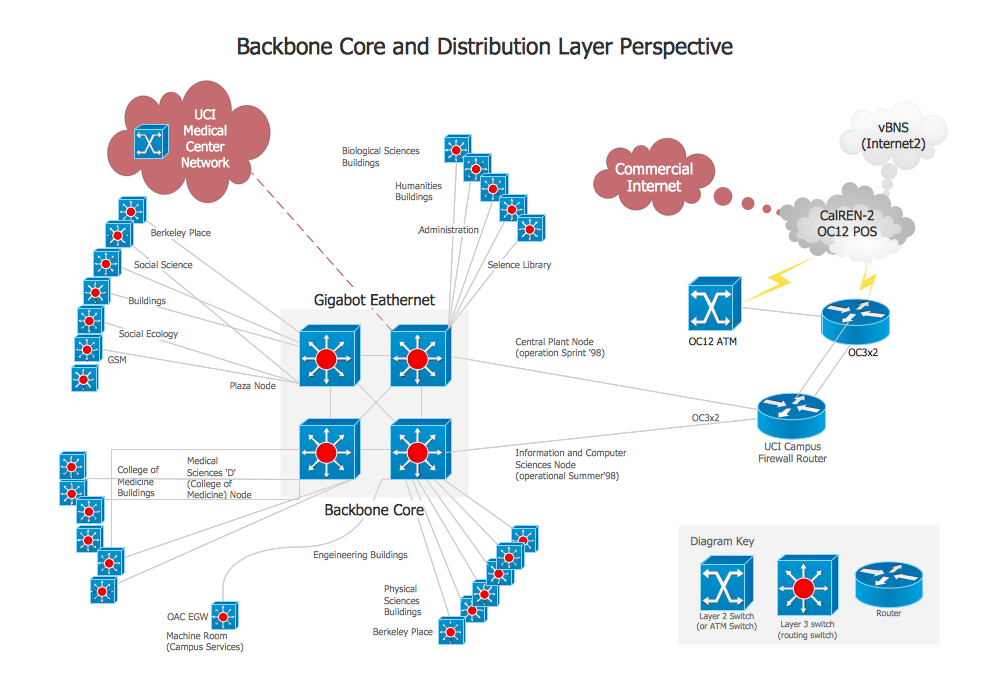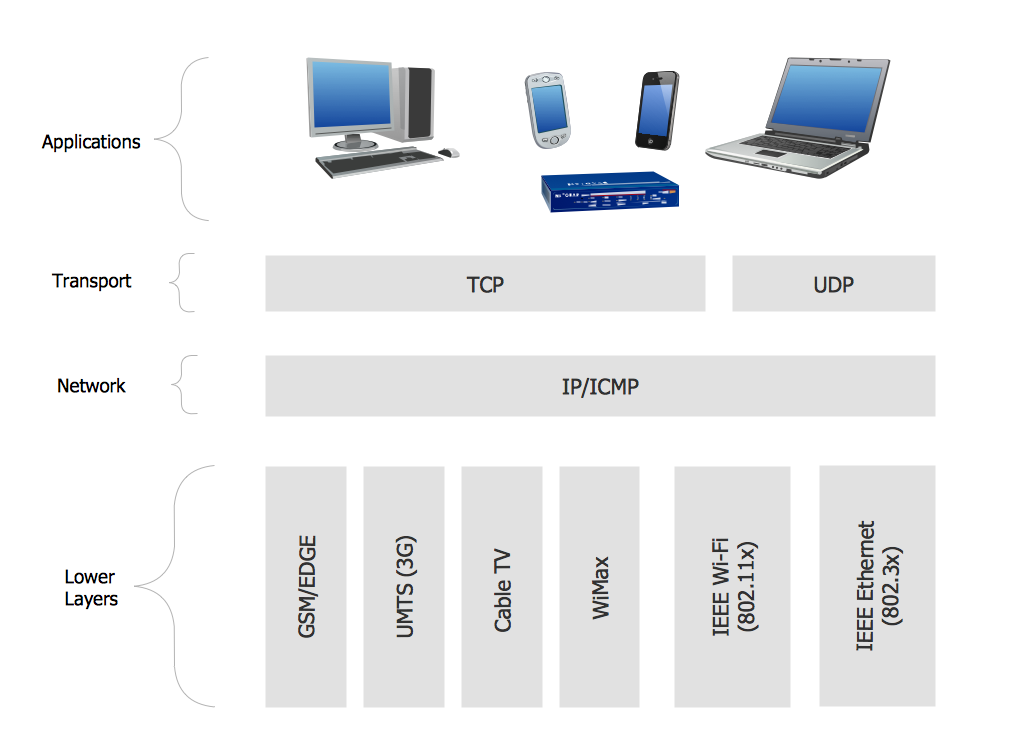Network Diagram Software
Network Diagrams are used to visually represent the network architecture, to illustrate the network structure, how the computers and other elements of the network are connected each other using a variety of network symbols, clipart and connection lines. They are incredibly useful on the stages of projecting computer network, of its construction and exploitation. Professionally designed and accurate Network Diagrams are equally convenient for computer engineers and users. You can construct them by hand on the paper or use special network diagramming software, such as ConceptDraw DIAGRAM. Having at disposal the powerful network diagramming tools of Computer Network Diagrams solution included to ConceptDraw Solution Park, you can succeed in drawing various types of Computer Network Diagrams, among them Network Communication Plans, Logical Network Diagrams, Network Topology Diagrams, LAN and WAN Diagrams, Network Floor Plan Layouts, Computer Network System Diagrams, Web-based Network Diagrams, Wireless Network Diagrams, Cisco Network Diagram, and others.
Network Hubs
Special libraries of highly detailed, accurate shapes and computer graphics, servers, hubs, switches, printers, mainframes, face plates, routers etc.
Design Element: Basic Network for Network Diagrams
ConceptDraw DIAGRAM is perfect for software designers and software developers who need to draw Basic Network Diagrams.
Network Diagram Software Backbone Network
ConceptDraw - Perfect Network Diagramming Software with examples of Backbone Network Diagrams. ConceptDraw Network Diagram is ideal for network engineers and network designers who need to draw Backbone Network diagrams.
Active Directory Domain Services
Active Directory Diagrams visualize the detailed structures of the Microsoft Windows networks, Active Directory Domain topology, the Active Directory Site topology, the Organizational Units (OU), and the Exchange Server Organization.- Parts Of A Computer Network System Diagram Required
- Star Network Topology | How To use Switches in Network Diagram ...
- Computer Network Diagrams | How to Make Network Diagram ...
- How to Draw a Computer Network Diagrams
- How to Draw a Computer Network Diagrams
- Physical LAN and WAN diagram - Template | Network Diagram ...
- Wireless Networks | How to Create a Wireless Network Diagram ...
- Telecommunication Network Diagrams | Computer Network ...
- Network diagrams with ConceptDraw PRO | Network Printer ...
- Computer Network Diagrams | Telecommunication Network ...
- UML component diagram - Start server | ConceptDraw PRO Network ...
- By Use Of Diagram Component Of Computer Network System
- Home area networks (HAN). Computer and Network Examples ...
- Diagram Of How Components In Computer Communicate
- Network diagrams with ConceptDraw PRO | Network organization ...
- How to Draw a Computer Network Diagrams | How to Create a ...
- Process Flowchart | How to Draw a Computer Network Diagrams ...
- ConceptDraw PRO Network Diagram Tool | Computer Network ...
- Network Printer | Network diagrams with ConceptDraw PRO ...
- ConceptDraw PRO Network Diagram Tool | Server Rack Parts Pdf


.png)


